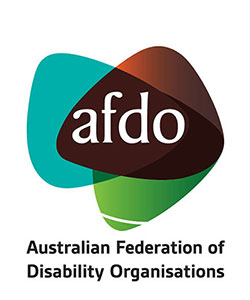The first World Report on Hearing – by the World Health Organisation (WHO) – will be published on 17 May 2020.
Deafness Forum is one of the members of a WHO working party to promote the World Hearing Report,.
The material on this page is to help you to understand the purpose of the Report and its expected content. Please send it to interested people and organisations. Feel free to use what we’ve written below in your communications.
What is the World Report on Hearing?
The report will deliver a cohesive narrative on hearing loss and ear and hearing care that is based on the best available evidence; outline the shift in the epidemiological distribution of hearing loss globally; highlight best practices for ear and hearing care; and provide guidance to Member States on recommended interventions. The report will work towards establishing links between addressing hearing loss and achieving many of the UN Sustainable Development Goals, notably those relating to ending poverty (Goal 1), ensuring healthy lives (Goal 3), improving chances for education (Goal 4), and promoting employment opportunities (Goal 8).
How can the World Report on Hearing be used?
Significant advancements in hearing technology combined with modern day communications tools and successful research applications in ear and hearing care, have increased the potential for people with all ranges of hearing loss to lead productive and fulfilled lives. The Report will educate readers of these advancements and provide recommended interventions to benefit people with hearing loss in their own countries. The WHO intends the World Report on Hearing to be used as both an evidence-based resource to increase understanding about hearing loss issues across the human life span and as a policy tool for guiding Member States in incorporating key ear and hearing care interventions into national health plans.
What is the geographical Focus of the World Report on Hearing?
The report will be global in its reach while keeping a special focus on low- and middle-income countries where the number of people with hearing loss is not matched by the availability of services and resources.
Who are the target audiences for the World Report on Hearing?
The target audiences are policy-makers and representatives of international agencies, civil society organizations, professional bodies and service providers.
What will the World Report on Hearing say?
The World Report on Hearing features four main sections with chapters detailing the following themes:
- Hearing across the life-course: will explain why hearing matters, the importance of communication in everyday life, and the impact of hearing loss on individuals, families and society. This section will provide a life-course perspective to hearing and outline how causative and preventative factors faced across the lifespan influence one’s hearing trajectory and determine an individual’s hearing capacity at any point.
- Actions for ear and hearing care: to demonstrate that hearing loss can be prevented, and its impact mitigated. It will showcase the vast array of preventative interventions that are available. It will also outline opportunities for early identification of hearing loss at all ages and in different settings, including community-based settings. The section will reflect on various effective clinical and technological advances that make it possible for everyone to benefit from hearing care, irrespective of their age, nature of hearing loss or communication preference. It will focus on public health approach as a means for delivering person-centred hearing care.
- Facing the challenges: this section will outline the various barriers and challenges faced in the field of hearing care. There will be a focus on epidemiology of hearing loss and its rising number in the context of ongoing demographic shifts; gaps in human resources available to provide ear and hearing care services in countries where they are most needed; and issues around access to hearing devices. It will look at challenges related to the often-complex requirements for addressing hearing loss; barriers of knowledge and awareness; and health system limitations. It will frame the issues that the ear and hearing field faces from the perspective of how those issues can be addressed, sharing examples from various countries.
- Designing the way forward: this section will propose a package of interventions for implementation by countries to promote access to ear and hearing care. It will include health system enablers that are necessary for implementation of this package.
What was the genesis for the World Report on Hearing?
In recognition of the rising prevalence of hearing loss globally, the World Health Assembly unanimously passed a resolution in 2017 focused on the prevention of deafness and hearing loss (WHA70.13). The Resolution urges Member States to make hearing health care a public health priority by making ear and hearing care accessible and integrating ear and hearing care into national health plans. In support of Member States’ efforts to implement this Resolution, the World Health Organization was called upon to prepare the first ever World Report on Hearing.



